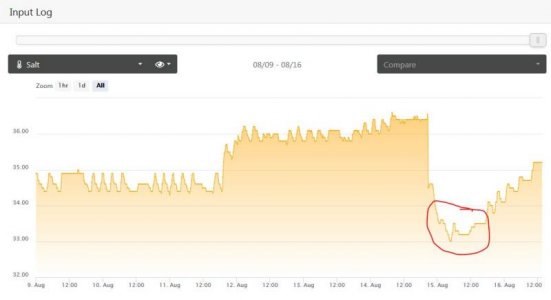1 consideration would be that the solution was not at tank temp when calibrating.
Or there were bubbles on the probe when calibrating causing a low reading.
What were your settling numbers during calibration?
Did the probe read 35 when left in calibration solution in the tank after finishing calibration.
I float packet of calibration solution in the sump and set the heaters to keep the tank between 77 and 77.1 using Apex and let temp come down to that overnight. When I calibrate, I hold the packet of solution in the sump so that temp stays at 77 or 77.1 while calibrating.
Re bubbles, I swirl probe in the packet to dislodge any that might be on tip and hold at angle so any there can escape through the side hole.
Re bubbles in the sump, I highly doubt they will get onto probe if they are there at all. Flow into sump is via a pair of ClariSea units, which are located at about midway point of a 40 breeder (hanging on the side of the tank), and exits from the end of the 40 breeder and goes to another sump, via a 2" pipe, where rest of filtration equipment is. The probes are located at the complete opposite end of the 40 breeder, against the far wall. So any bubbles/turbulence that makes its way through the filter fleece of the ClariSea units should be swept in the complete opposite direction of the probes. In other words, the probes are located at a very quiescent location.
Interestingly, the salt level has leveled off at elevated level, which may coincide with raised levels due to more consistent dosing over the last week..... still, though, get spikes/spurious readings on the pH probes.....
bigger things to worry about, though....

